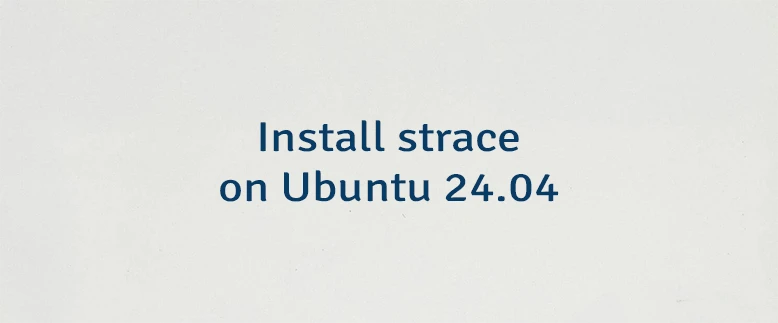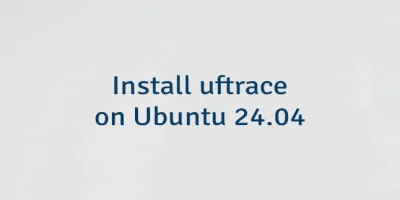The strace is a command line tool on Linux that allows you to trace the system calls and signals used by a program, providing deep insight into how it interacts with the operating system. It's commonly used for troubleshooting, debugging, and understanding program behavior by showing calls like file access, network activity, and process control in real time. This tutorial shows how to install strace on Ubuntu 24.04.
Install strace
Make sure the package lists are up-to-date:
sudo apt updateInstall strace:
sudo apt install -y straceOnce installed, check strace version as follows:
strace --versionTesting strace
To use the strace command, simply run it before the command you want to trace:
strace myprog arg1 arg2Replace myprog arg1 arg2 with the actual command. For example:
strace echo "Hello world"It will show the system calls made by the echo command. The output might look like this:
execve("/usr/bin/echo", ["echo", "Hello world"], 0x7ffd283516a8 /* 21 vars */) = 0
brk(NULL) = 0x635503184000
mmap(NULL, 8192, PROT_READ|PROT_WRITE, MAP_PRIVATE|MAP_ANONYMOUS, -1, 0) = 0x7adc3baf3000
access("/etc/ld.so.preload", R_OK) = -1 ENOENT (No such file or directory)
openat(AT_FDCWD, "/etc/ld.so.cache", O_RDONLY|O_CLOEXEC) = 3
fstat(3, {st_mode=S_IFREG|0644, st_size=15735, ...}) = 0
...
close(3) = 0
fstat(1, {st_mode=S_IFCHR|0620, st_rdev=makedev(0x88, 0), ...}) = 0
write(1, "Hello world\n", 12Hello world
) = 12
close(1) = 0
close(2) = 0
exit_group(0) = ?
+++ exited with 0 +++Uninstall strace
To completely uninstall the strace, run the following command:
sudo apt purge --autoremove -y strace



Leave a Comment
Cancel reply